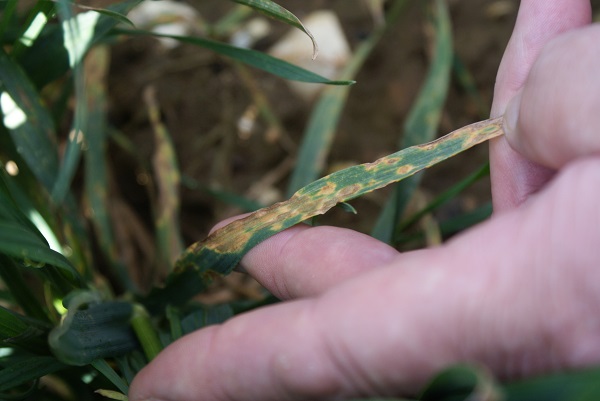There can be little doubt that there are huge changes ahead in the way we farm. For some that’s exciting and full of opportunities, for many it’s just plain worrying. Right now, we’re slightly between a rock and a hard place.
It’s difficult to plan for change when you don’t know exactly what’s coming. How do you adopt the new disruptive technologies that are going to change the very fabric of agricultural practice when the technologies themselves aren’t quite ready yet? And will they be affordable. All big questions.
Some of these technologies will help us manage problems like fungicide resistance, but trusting them to reliably deliver will take time. Agriculture is a very risk-averse industry, the stakes are high and making a wrong call can soon turn a mediocre profit into a devastating loss. So it’s no wonder we’re addicted to fungicides, but we can get smarter in the way we use them and there are lots of exciting developments on the cusp of commercial use. That’s something we’re going to be delving into this spring in the pages of CPM as we explore fungicide use and resistance management.

Resistance management strategies really need thinking through.
Resistance is an issue of huge importance to the industry and the headline science is crystal clear – the more times a fungicide is sprayed, the more we select for resistance in the septoria population. The fact we have developed resistance to fungicides with a single target site isn’t a surprise, it’s expected. But delve a bit deeper and the science becomes a little less clear cut. How the septoria pathogen will evolve is complex – with SDHI resistance we’re dealing with an unknown.
While not underplaying the importance of resistance – fungicides are critical to wheat production on the western fringe of wheat growing in Europe – it’s important not to over-interpret the data presented at the AHDB conference. My instant reaction was to leap onto an evangelical pedestal, the end of SDHIs is nigh, and proclaim using two SDHIs in the programme is a bad thing. But I think there’s some serious thought required before going down that particular route. It’s just not that simple.
The way fungicides are used and assessed in fungicide performance trials is a far cry from how they’re used in practice, where mixtures are order of the day. That’s not to say that these trials don’t give a valuable insight into what’s probably also happening to some extent in the field, they undoubtedly do.
But it’s also important that we don’t lose all context here and leap down a route we may regret. In France the regulators only allow one application and it hasn’t prevented them from having resistance problems. The fact that our decline in azole efficacy seems to have levelled out is most likely because the SDHIs have taken a bit of pressure off them, surely a reasonable case for two applications under many circumstances?
That’s not to say there isn’t scope to reduce fungicide usage, tailoring programmes according to disease risk is undoubtedly the way forward and this is where new technology can’t come soon enough. I’m excited that in the very near future it’ll be possible to go out into the field and test for septoria in its latent phase. Combine this with spore detection and sensor technology and then there’s a fair chance of picking up on hotspots of early infection. These technologies will provide us with the opportunity to apply fungicides before they’re put under the pressure of being applied in a curative situation. Bingo!
Resistance is complicated and it’s not surprising if growers feel a little confused about what they should or shouldn’t be doing. That’s where the recently announced AHDB Fungicide Futures initiative will need to deliver crystal clear, yet sensible messages that won’t compromise the effectiveness of disease control. It will be interesting to see how the campaign develops.
Undoubtedly there’s always a difficulty in unwrapping the commercial messages around products and being clear about any possible implications on the pathogen population. The reality is that we’re all responsible for the future of active ingredients, which probably means many fungicide programmes need to be picked apart and put back together again.
Based in Ludlow, Shrops, CPM technical editor Lucy de la Pasture has worked as an agronomist. @Lucy_delaP




